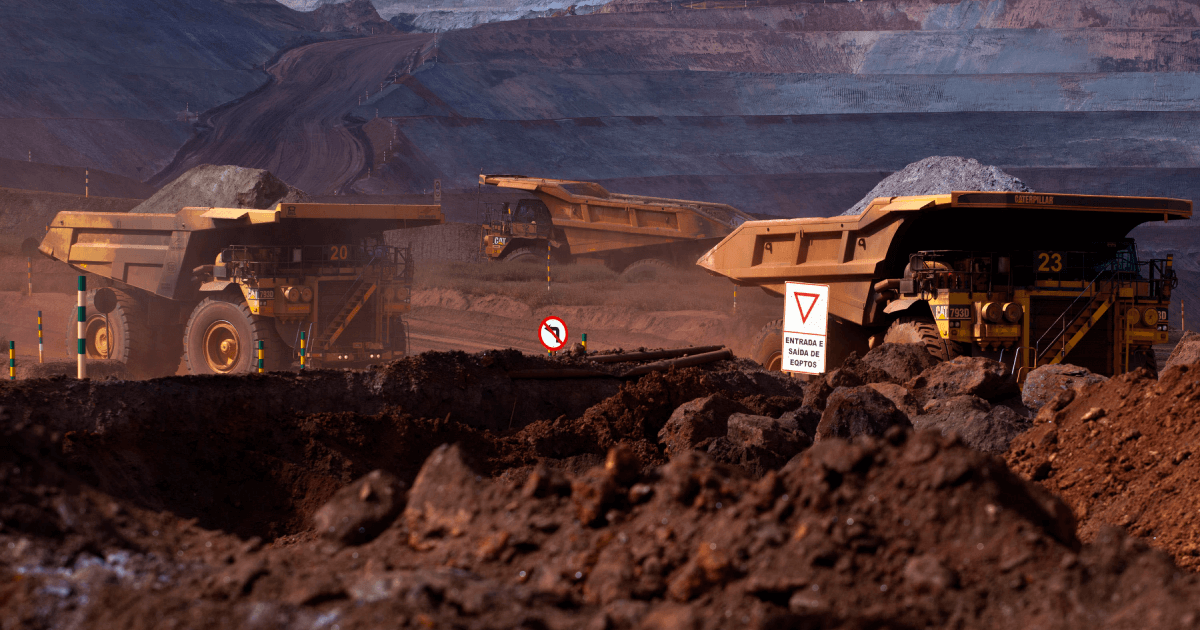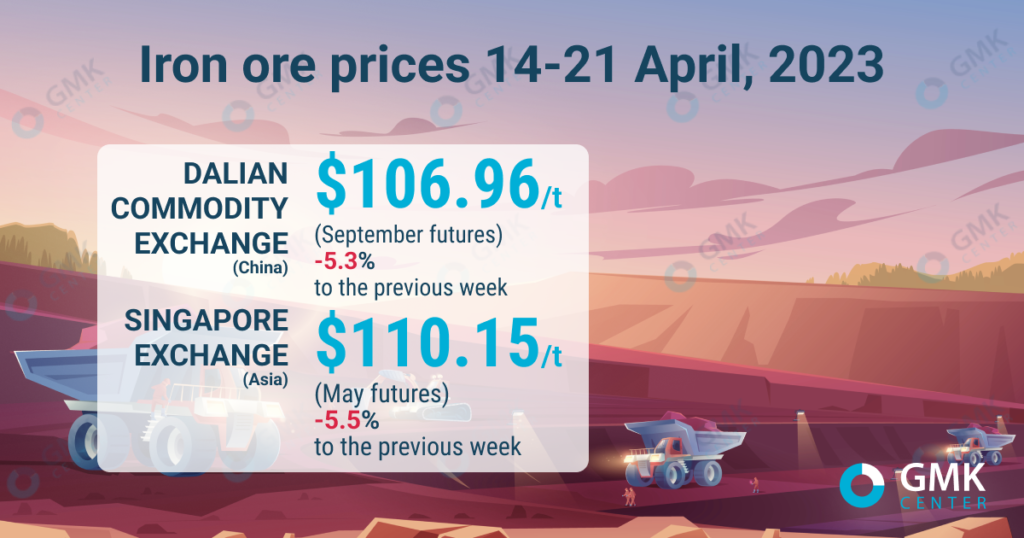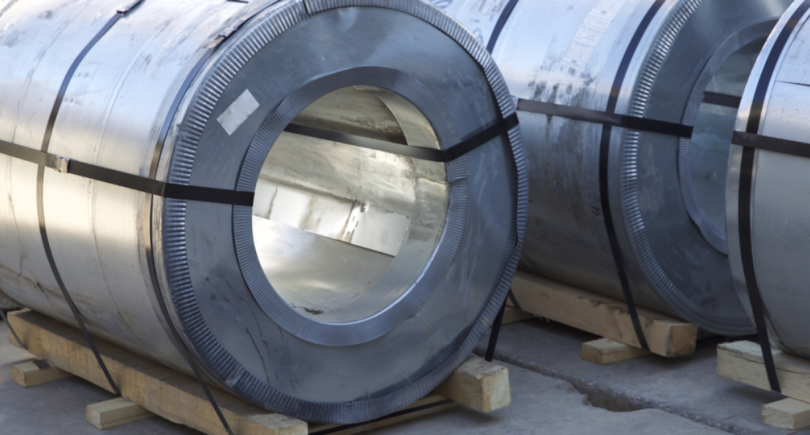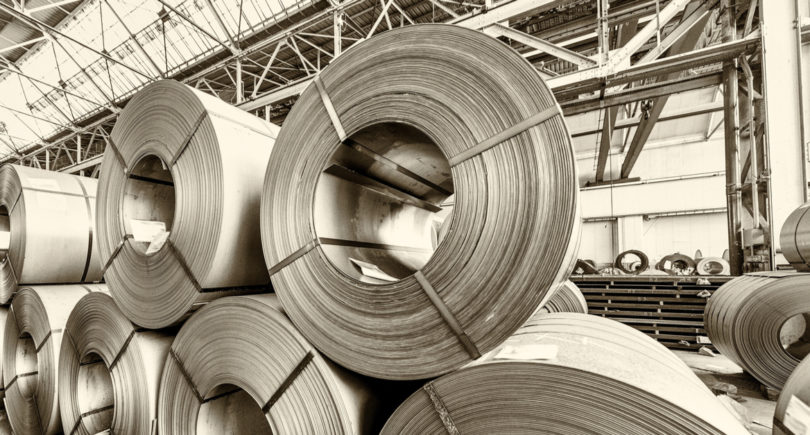
News Global Market iron ore prices 1294 21 April 2023
Iron ore futures on the Dalian Exchange for the week of April 14-21, 2023, decreased by 5.3% compared to the previous week
September iron ore futures, the most traded on the Dalian Commodity Exchange, for the week of April 14-21, 2023, fell by 5.3% compared to the previous week – to 736.5 yuan/t ($106.96/t). Thus, iron ore quotations fell to a four-month low. This is evidenced by Nasdaq.
On the Singapore Exchange, May futures fell by 5.5% as of April 21, 2023, compared to April 14 – to $110.15/t, the lowest since December 28, 2022.

Iron ore prices April 14-21, 2023
Iron ore continues to lose in price amid growing concerns about a possible drop in demand in China, as the government of the country may soon decide to limit steel production this year. The decision could hurt an already weak market, which is under pressure from weak domestic steel demand despite the country’s peak construction season, as well as a weakening global economic outlook.
According to Bloomberg, China’s 2023 steel cut plan is likely to be made public before the end of April.
A positive signal for the market was the growth of China’s GDP in the first quarter at the level of 4.5%, which exceeded analysts’ forecasts by 0.5 percentage points and dispelled market uncertainty about the economic recovery of the world’s largest economy. Amid this, at the beginning of the week, iron ore prices showed a short-term recovery, but this trend was suppressed by the constant pressure of the country’s government over the speculative increase in the cost of raw materials. In addition, the advantage of supply over demand also negatively affects pricing.
In the near term, iron ore prices in China are likely to continue to decline as weak steel demand coupled with a gradual increase in supply, as evidenced by the latest quarterly data from global mining companies, create a negative trend for the market. The further development of the price policy for the iron ore market is at the maximum disadvantage due to the large supply, price control by the Chinese authorities and China’s intention to reduce steel production during the year. In addition, steel consumption by the construction sector did not live up to market expectations, although the peak of the construction season was predicted for March-April.
Regarding the long-term perspective, price forecasts from rating agencies and analysts for 2023 differ significantly. In particular, Fitch expects that iron ore quotations by the end of the year will amount to $125/t. The outlook was upgraded from $110/t amid market optimism for the recovery of the Chinese economy.
Analysts from financial corporation Morgan Stanley forecast the price to be $90/t in the second half of 2023. They cite China’s low steel output and the country’s move to more scrap metal.
Commonwealth Bank of Australia (CBA) also predicted a drop in commodity prices, expecting them to reach $100/t by the fourth quarter of 2023 as Chinese steel demand eases in the second half of 2023.
As GMK Center reported earlier, iron ore mining in China in March 2023 decreased by 5% compared to March 2022 – to 86.4 million tons. For the first quarter, the figure remained close to the level of 2022 – 243.26 million tons.
At the same time, iron ore import to China increased by 9.8% y/y in the first quarter – up to 294.33 million tons. In March, China imported 100.23 million tons of iron ore, which is 10.6% more compared to February 2023 and 14.8% compared to March 2022.



